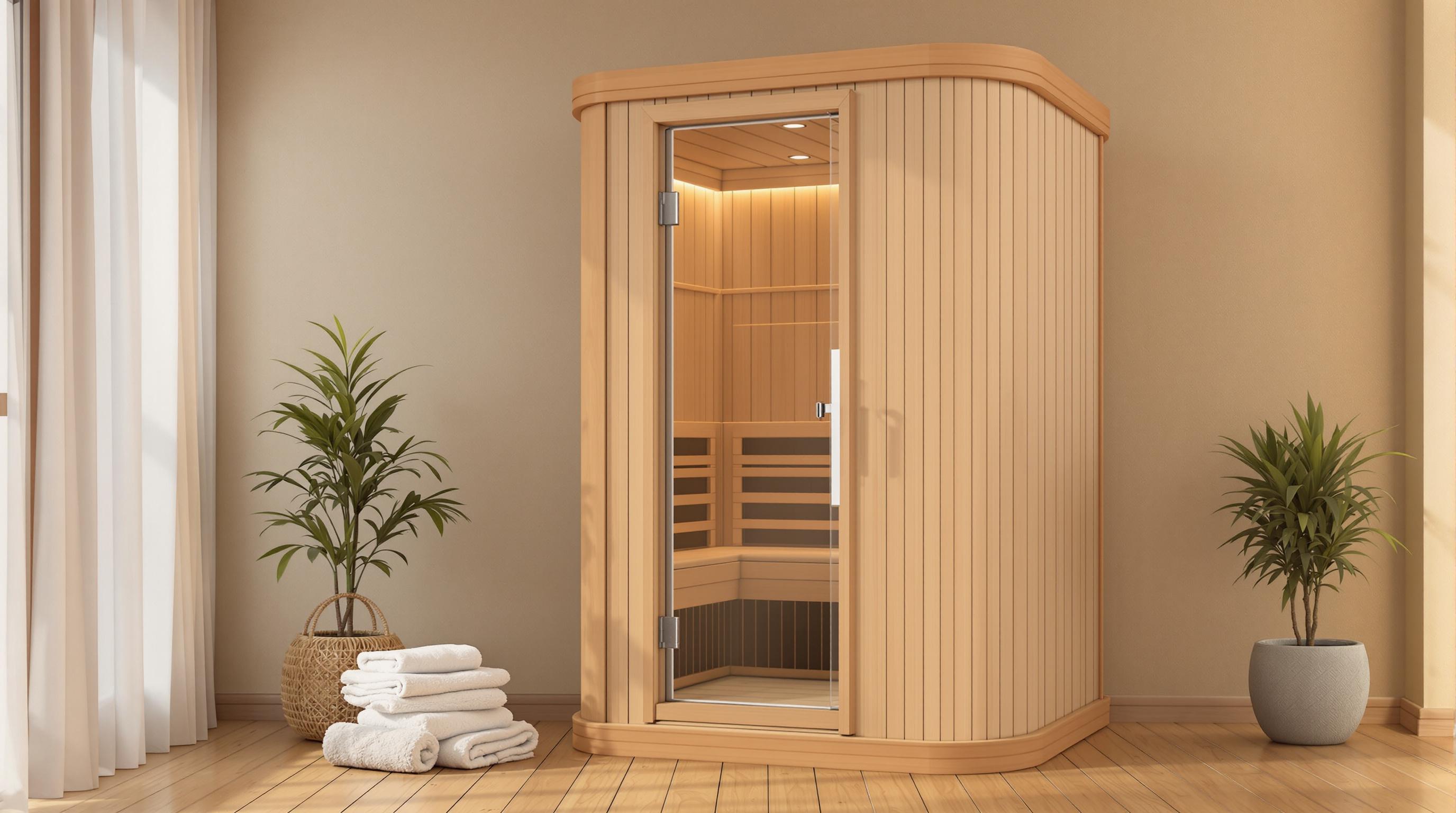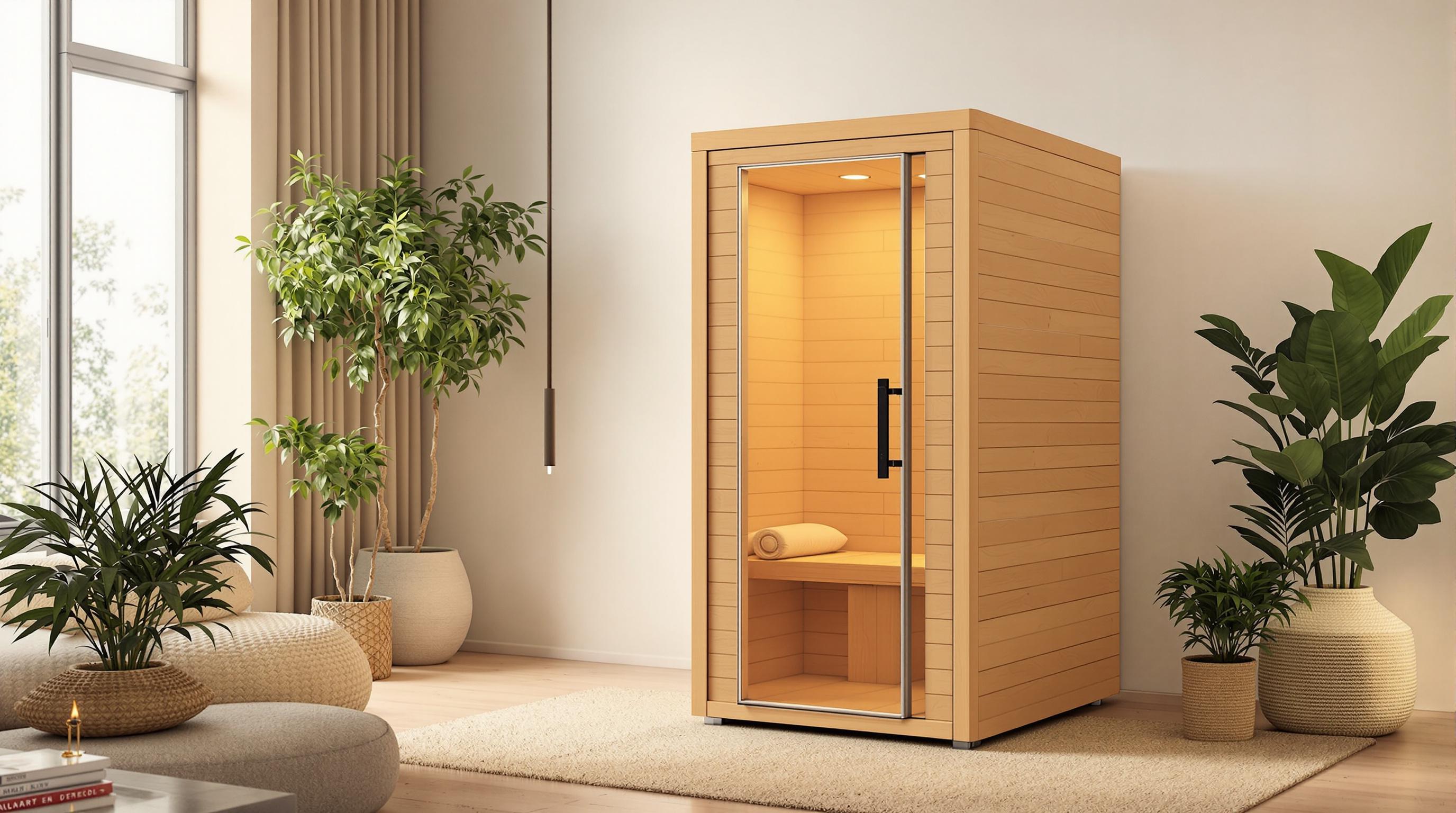Mold in home saunas can form in just 24-48 hours if not properly managed. High humidity, heat, and damp surfaces create the perfect environment for mold, which can damage your sauna and harm your health. Here’s how to prevent it:
- Improve Airflow: Ensure proper ventilation with intake and exhaust vents. Use a hygrometer to monitor humidity.
- Clean Regularly: Wipe down benches, walls, and floors after each session. Pay attention to corners and moisture-prone areas.
- Choose Mold-Resistant Materials: Use woods like cedar or redwood, which naturally resist mold.
- Control Humidity: Keep levels below 60% using a hygrometer, ventilation, and minimal water usage.
- Avoid Water Buildup: Install drainage systems, dry surfaces after use, and check for water in corners and joints.
5 Quick And Easy Steps To Clean Your Sauna
1. Improve Airflow
Proper ventilation is key to stopping mold in its tracks by keeping moisture at bay [1]. For best results, place intake vents low near the heater and exhaust vents high, away from the heat source [2].
Here’s how ventilation varies by sauna type:
- Traditional Steam Saunas: Use a dual-vent system with adjustable high and low vents, plus a drain to manage moisture.
- Wood-Burning Saunas: Feature a semi-open floor design and underground air ducts near the stove to ensure airflow.
- Infrared Saunas: Require a simpler system with an optional fan, as they produce less moisture.
Watch out for common mistakes like blocked vents or improperly screened exterior vent covers, which can trap moisture. Keep airflow unobstructed and circulation steady [5].
A hygrometer can help you track humidity levels. If moisture gets too high, adjust by opening vents or running exhaust fans longer [3].
Each sauna type has different ventilation needs. Infrared saunas, with their lower moisture levels, need minimal ventilation. In contrast, traditional steam saunas demand a more robust setup to handle higher humidity [1].
Good airflow is a crucial step in preventing mold, but it’s just one part of the solution.
2. Clean Regularly
Keeping your sauna clean is essential for hygiene and longevity. Here's a quick guide to help you stay on top of maintenance:
After Each Session
- Use a soft-bristled brush and warm water to wipe down benches, walls, and floors, especially where sweat or moisture is visible.
- Leave the door open to allow proper drying [4].
For Tough Stains
For stubborn spots, try Murphy Oil Soap or a diluted bleach solution to tackle visible mold. Once cleaned, ensure the area is fully dry using towels or proper ventilation [1].
| Area | Frequency | Tips |
|---|---|---|
| Benches | After each use | Focus on areas with frequent sweat contact. |
| Floor/Walls | After each use | Pay attention to corners and splash zones. |
| Ventilation | Monthly | Clean both intake and exhaust vents. |
Moisture-Prone Areas
Pay extra attention to spots like floor corners, bench joints, around the heater, and below ventilation outlets [3]. These areas are more likely to accumulate moisture and require thorough cleaning.
Regular maintenance not only keeps your sauna looking great but also helps prevent issues like mold. Choosing appropriate materials can further minimize risks.
sbb-itb-3953eb0
3. Choose Mold-Resistant Materials
Picking the right materials plays a big role in keeping your sauna mold-free. When paired with proper ventilation and regular cleaning, these materials help minimize the chances of mold taking hold.
Woods like cedar, redwood, cypress, and spruce are popular choices because they naturally resist mold. Cedar is especially effective due to its natural oils that repel both moisture and fungi, making it perfect for the sauna's humid environment [4]. However, cedar's benefits come at a higher price, while spruce is more budget-friendly but needs more upkeep.
| Wood Type | Moisture Resistance | Maintenance Needs |
|---|---|---|
| Cedar | Excellent | Low |
| Redwood | Very Good | Moderate |
| Cypress | Good | Moderate |
| Spruce | Fair | Higher |
Tips for Using Sauna Materials
- Avoid sealing the wood, as sealants can trap moisture and encourage mold [1][3].
- Use natural oil treatments only when absolutely necessary.
- Let the wood "breathe" by allowing it to age naturally.
While selecting the right materials is a great start, keeping humidity levels under control is just as important to prevent mold from forming in your sauna.
4. Control Humidity
Keeping humidity levels below 60% is crucial to stopping mold from taking hold in your sauna [1]. Installing a hygrometer at eye level lets you monitor moisture levels and act quickly if they get too high.
Here's how humidity levels impact your sauna:
| Humidity Range | Risk Level | Action Needed |
|---|---|---|
| 40-60% | Moderate | Maintain proper ventilation |
| Above 60% | High | Take immediate steps to reduce moisture |
To keep humidity in check, try these practical tips:
Use Water Sparingly: Be mindful of how much water you pour over sauna stones. Too much water can raise humidity levels and increase mold risk [1]. Stick to just enough to create the amount of steam you enjoy.
Optimize Ventilation: Make sure your ventilation system is doing its job by efficiently removing moist air [5]. After each session, leave the sauna door open to help it dry out.
If you live in a particularly humid area, placing a small dehumidifier near your sauna can help manage moisture effectively during those times [3].
While controlling humidity is key, don’t forget to address water accumulation to keep your sauna mold-free.
5. Avoid Water Buildup
Excess water is one of the main reasons mold can develop in home saunas. Keeping water under control with proper drainage and moisture management is key to maintaining a clean and safe sauna environment.
Install Proper Drainage
A floor drain is essential for directing water out of your sauna. Make sure the flooring is slightly sloped toward the drain to ensure smooth water flow [1].
Here’s a quick look at water risks and drainage needs for different sauna types:
| Sauna Type | Water Risk Level | Recommended Drainage Solution |
|---|---|---|
| Traditional Steam | High | Floor drain + sloped flooring |
| Infrared | Low | Basic moisture removal system |
| Hybrid | Moderate | Floor drain + proper ventilation |
Smart Water Usage
Use water sparingly during sauna sessions. A simple guideline: stick to about a cup of water every 15 minutes when adding steam. This keeps moisture levels manageable without sacrificing humidity [1].
Post-Session Care
After each sauna session, take a few minutes to clean up. Use a squeegee to remove water from surfaces, dry them with a towel, and leave the door open to improve air circulation [1].
Keep an Eye on Problem Areas
Corners and joints are common trouble spots where water can collect, leading to mold. Regularly check these areas to catch any problems early [1].
For saunas without drains, consider using absorbent mats and a portable dehumidifier. These tools help control moisture and protect wooden surfaces from damage [3].
Conclusion
Keeping your home sauna free of mold requires regular care and smart preventive steps. By following the five tips outlined earlier, you can minimize mold risks and maintain a clean, healthy sauna space.
Key factors like proper ventilation, consistent cleaning, and using mold-resistant materials all play a role in stopping moisture buildup and mold growth [1][3]. Cedar, known for its natural anti-fungal properties, becomes even more effective when paired with good humidity control and proper drainage solutions [4].
Stopping mold before it starts is easier and cheaper than dealing with it later. Staying on top of maintenance not only protects your health but also extends the life of your sauna. A little effort now can save you from the hassle and expense of future repairs.
Thinking about upgrading to a mold-resistant sauna? Check out Find the Home Sauna of Your Dreams.
Why Maintenance Matters:
| Aspect | Regular Maintenance | No Maintenance |
|---|---|---|
| Lifespan | Lasts longer | Wears out faster |
| Air Quality | Clean and fresh | Risk of moldy conditions |
| Health Risk | Low to none | Higher exposure to mold |


